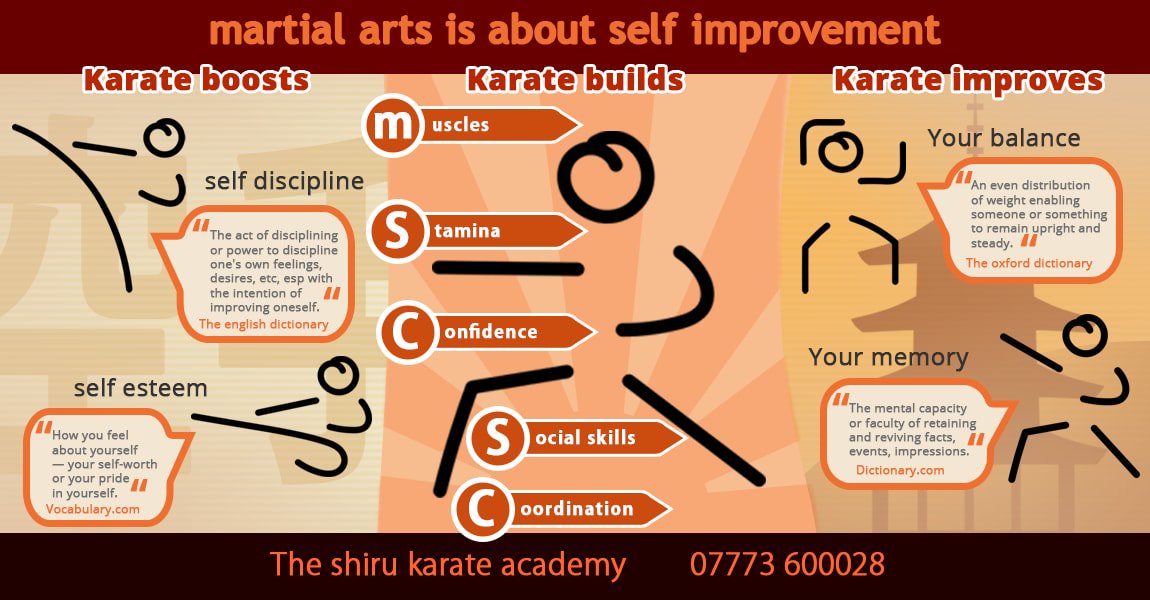The Development And Progression Of Martial Arts: Tracing Its Origins From Ancient Times To Contemporary Practices
The Development And Progression Of Martial Arts: Tracing Its Origins From Ancient Times To Contemporary Practices
Blog Article
Material Create By-Svenstrup Whitaker
Step into the globe of martial arts, where ancient beginnings and modern-day techniques clash in a thrilling journey of self-control and self-discovery.
As Click In this article look into the background and evolution of this exciting art type, prepare to be mesmerized by the social impacts, technical developments, and profound approach that have formed it over centuries.
From the combat zones of ancient human beings to the training grounds of today, martial arts have actually stood the test of time, constantly adjusting and expanding.
Each strike, each activity, lugs with it the weight of countless years of practice and knowledge, passed down with generations. This is a tale of resilience, of warriors who sought not just physical prowess, but likewise self-confidence and consistency.
Join us on this impressive expedition as we reveal the keys, the tales, and the transformational power of martial arts.
Prepare yourself to be inspired, challenged, and permanently altered by the history and evolution of martial arts.
Cultural Impacts on Martial Arts
As you explore the background and development of martial arts, you'll swiftly uncover the fascinating ways in which social impacts have shaped these fight methods.
From the ancient human beings of China and India to the a lot more current developments in Japan and Brazil, martial arts have been greatly influenced by the cultures in which they stemmed.
For example, Chinese martial arts, such as Kung Fu and Tai Chi, are deeply rooted in the philosophy of Taoism and the principle of Yin and Yang.
In contrast, Japanese martial arts, like Karate and Judo, show the samurai warrior customs and the values of technique and honor.
Likewise, Brazilian martial art, Capoeira, combines elements of African dancing and songs, reflecting the social heritage of African slaves in Brazil.
These social affects not just offer each martial art its unique attributes however also provide a deeper understanding of the historic and social contexts in which they developed.
Technological Advancements and Martial Arts
With the rise of sophisticated weaponry and cutting-edge training tools, you've been able to improve your skills and adapt to the ever-changing fight landscape.
Technological improvements have transformed the method martial arts are exercised and taught. Virtual reality simulations currently allow you to learn sensible combat circumstances without the threat of physical harm. High-speed cameras capture every move, allowing you to assess and ideal your methods. Wearable devices monitor your heart price, breathing, and muscle activation, providing instantaneous responses on your efficiency.
Furthermore, the growth of customized tools, such as resistance bands and dexterity ladders, has actually enabled you to improve your rate, strength, and dexterity. These technological innovations have not just made training more efficient however have likewise pushed the boundaries of what is feasible in martial arts, allowing you to get to brand-new heights in your technique.
The Approach and Principles of Martial Arts
The philosophy and concepts of martial arts are deeply rooted in shaping your attitude and instilling discipline, focus, and regard in your technique.
1. Attitude: Martial Arts shows you to develop a solid and resilient mindset. It enables you to get over obstacles both on and off the mat, pushing your restrictions and being determined when faced with adversity.
2. Discipline: Martial Arts needs technique and self-constraint. Through regular training and adherence to strict policies and strategies, you discover to regulate your impulses and develop a strong work ethic.
3. Emphasis: Martial Arts needs intense focus and concentration. By training your mind to be present in the minute, you improve your capability to respond promptly and efficiently during combat circumstances.
4. Regard: Martial Arts emphasizes respect for oneself, teachers, training companions, and opponents. It shows you to value the abilities and experiences of others, promoting a feeling of sociability and sportsmanship.
Conclusion
Congratulations on completing your trip via the fascinating globe of martial arts! Throughout this expedition, you have witnessed the rich background and remarkable advancement of these battle techniques.
From their old origins to the modern-day techniques we see today, martial arts have actually been formed by social impacts.
The assimilation of modern technology has also played a substantial role in changing the means martial arts are taught and practiced in the present day.
However, it is important to keep in mind that martial arts are more than just physical fight. They incorporate extensive approaches and leading principles that go beyond the plain act of combating.
Take what martial arts is good for kids to reflect on this obsolete journey and appreciate exactly how the tradition of martial arts continues to prosper in the present, transcending time and borders.
